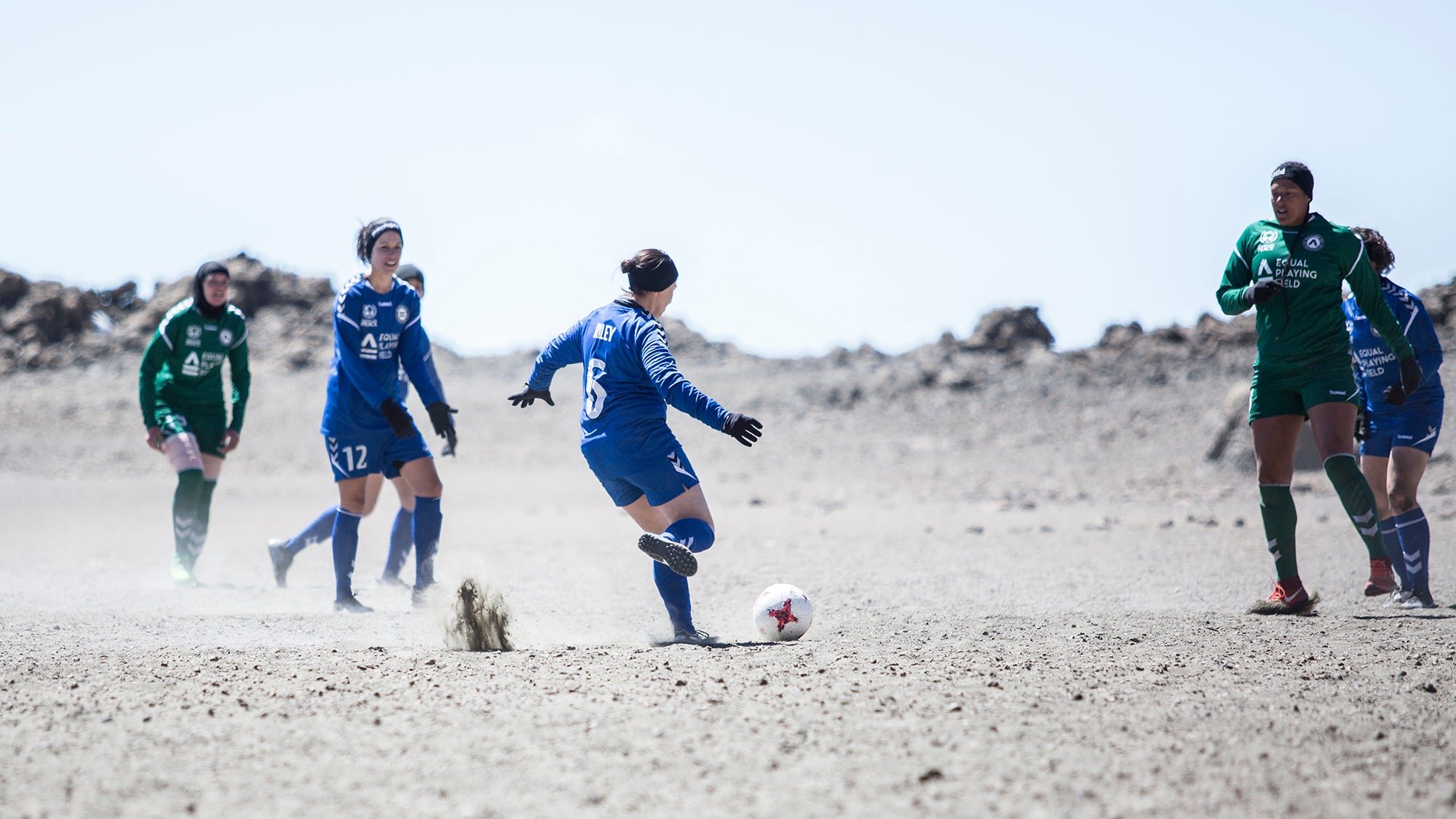Keely Wachs for Goal Five
It begins with a love of soccer, in all forms, a game that I’ve been playing, watching and coaching for more than 35 years.

For me, soccer is life. Its marriage between creativity, athleticism and community-building is unrivaled in sports. Through its beauty, heartbreak and daring, it brings people together. It is, after all, the people’s game. Which is why, in 2015, I felt a need to address a glaring problem, which threatened the very essence of the people’s game - the game I love so much. The 2015 Women’s World Cup captivated my family. My two sons, aged nine and five at the time, would run home from school, eager to watch the US Women’s National Team. They even bought kits. My oldest son came home one day with Alex Morgan’s autobiography, which he had checked out from the school library. Inspired by the brilliance of these incredible athletes, we bonded over the game, and celebrated the greatness of the world’s finest footballers.
The Cup culminated in the US Women’s clinical victory over Japan and Carli Lloyd’s ascendancy to the top of the football world. Her display of courage and cunning was seen by 25 million people in the U.S., the most ever to watch a soccer game. Yet the celebration of her and the team’s greatness remained overshadowed by an incomprehensible narrative. These amazing athletes, more successful than the U.S. men on the pitch and more venerated than the men by the public, did not enjoy the same benefits as their male counterparts. They were, in fact, treated as lesser, unequal.
Stories about this inequality dominated the headlines. The Women’s World Cup winners earned $2 million for their victory, while the male winners in Germany earned $35 million. Leading up to the Cup, we learned that the women had to train on sub-optimal fields, leading to the injury of one of the world’s greatest players, Megan Rapinoe. Hope Solo, the greatest keeper in U.S. history, documented the subpar hotel conditions regularly experienced by the U.S. team.

How could this be? How would I explain this to my sons? What could I possibly say to justify the fact that their summer heroes were not equally treated?
There really wasn’t much to say. I had to be honest and own the fact that despite their greatness on the field, the women weren’t treated equally and that it wasn’t fair. That it didn’t make much sense. That this same conversation could have applied to almost all professional environments, not just soccer.
And, quite honestly, if we had been talking about the film industry, finance or media, I don’t think that I would have done anything about it. I was and continue to be equally offended by the broad unequal treatment of women professionals. But with soccer, it was different. This was my game, my life’s passion, and the inequality compromised the integrity of its greatness by limiting the full potential of its women players.
So I asked the question: what can I do? How can I contribute to fixing this problem?


But certainly they deserved better. The connection to how one’s gear fits and how they perform is well documented. So why not create a women’s soccer apparel brand that made gear for female players’ specific needs? Could we build a brand who focused solely on celebrating her greatness and addressing gender inequality in the game? I went to two of the smartest and most qualified people I knew. Carrie Kessler, a friend and an apparel production executive at Banana Republic, and Ann Kletz, a non-profit executive who has dedicated her career to empowering girls through sport. Both life-long soccer players, they felt the same compelling need to fix the problem. Two years later, we launched our first collection of performance and lifestyle gear. And we’ve built a mission driven business that donates five percent of profit to organizations who are helping girls all around the world gain access to the beautiful game.

Founders Keely Wachs, Carrie Kessler, and Ann Kletz
And while we’re just getting started, we’ve been incredibly humbled by the response and support that we’ve received from this amazing community of female players. Every day we wake up inspired by female soccer players’ greatness and committed to moving the game forward. I’m incredibly grateful to Ann and Carrie for saying yes, for the Goal Five athletes and team who share our vision, and for those female players who play for the love of the game and who work every day to make it better.
Sincerely,
Keely Wachs @kwachs
Goal Five Co-Founder
This article is the first in a series about the company and its origins.




5 comments
Wali
Midway Sports offers a comprehensive selection of women’s soccer apparel, catering to both individual athletes and teams. Their inventory includes high-quality products from renowned brands like Nike and Under Armour, ensuring durability, comfort, and performance on the field.
Amy Lafferty
I enjoyed my black t-shirt that says “Equal Play” (L) but I’m afraid I’ve worn it out and need to order some new things.
Michele Blethen
Hello,
Do you partner with or sponsor adult female players who are looking for a way to get involved with helping an organization like yours Eli others more?
My daughter plays for Tampa Bay United currently . It’s semiprofessional, however, it is going professional next year. She’s played professionally in the Czech Republic, after playing in college at USF, and played for the National Indoor Soccer League just recently.
I am her mother, cheerleader, manager without a paycheck LlOL, and she would like me to help her find something she can get involved with, to support, to give back to her community, while continuing on her soccer journey.
Neither of her professional teams paid well, she was recently physically assaulted in a game and she is now on an antibiotic for MRSA in her knee wounds because the indoor turf wasn’t cleaned properly, if at a. She has had complete ligament ankle surgery and has to wrap her ankle still for every game and practice. She’s 25 and has dealt with a lot, but won’t complain and isn’t sue happy. She just wants to play the sport she loves and wants to help the next generation to have it better!
Thank you for reading,
Michele Blethen
(Devoted Soccer Mom)
LaSaundra Lynn Jacobs
Phenomenal!!!! You have always been captivated with helping other human beings succeed and caring for their wellbeing. You are an awesome person Keely Wachs. I am grateful and humbled to know you. Lynn Jacobs
Abby Gordon
Keep fighting the good fight! Thank you for what you’re working for. Can’t wait to see where youbqnd your company go!
Leave a comment
This site is protected by hCaptcha and the hCaptcha Privacy Policy and Terms of Service apply.